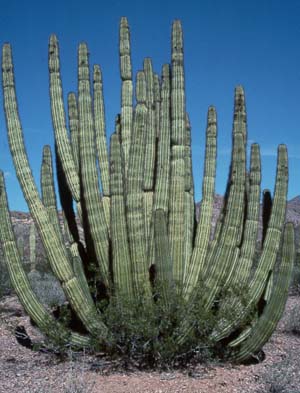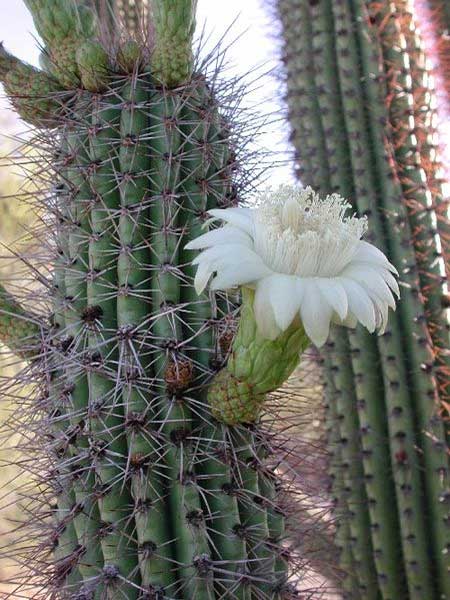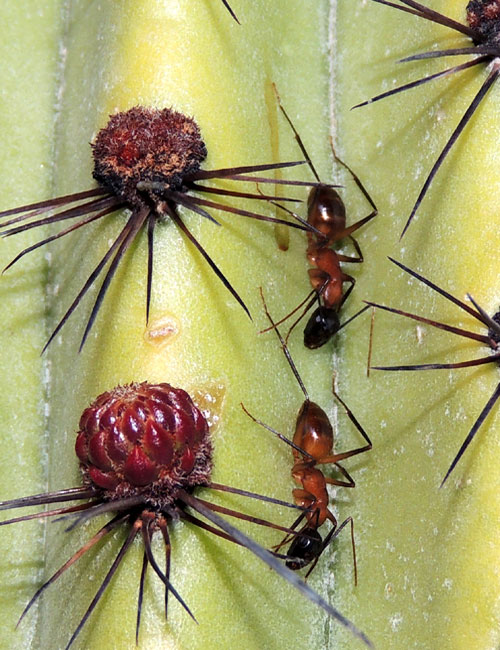Organ Pipe Cactus
Stenocereus thurberi

This mature Organ Pipe Cactus was photographed at Organ Pipe National Monument, Arizona, USA.

This photograph was taken at Organ Pipe National Monument in May 2006 and is also available on Wikipedia.
BRANCHING: This cactus is easily recognized by the dozen or more
columnar branches rising from a very short trunk and the virtual lack of
branching above the ground.
SPINES: Approximately fifteen straight spines per ariole, 13 mm long,
dark gray and all about the same thickness.
FLOWERS: The large, mostly white flowers, which are tapered basally and
give a tubular appearance, open at night to be visited by nectar-feeding bats
and hawk moths. The petals are numerous and waxy-white.
FRUIT: Behind the dense coat of spines that eventually fall off is a
tasty, red fruit or pitahaya, as it is called in parts of northwestern Mexico.
RANGE: Common at Organ Pipe National Monument and north to near Ajo,
Arizona. Extremely rare beyond this range in Arizona. Widespread in Sonora,
Mexico.
Like the saguaro, the developing flower buds are attractive to ants, wasps and flies. The night-time guard over the developing buds and fruit is taken on by formidable Camponotus (Tanaemyrmex) ocreatus Wheeler ants. Not only are these ants much larger, but they can also discharge formic acid at any disturbing force. The ants, like the other insects that come to cactus buds appear to remove a sticky substance, possibly a sugar.
Cactaceae -- Cactus Family
Sponsored Links:

A pair of carpenter ants (Camponotus ocreatus) photographed at night at Organ Pipe Cactus National Monument on Organ Pipe Cactus. May 2013. The red buds secrete sugary substances that feeds the ants and gives them reason to defend the plant against herbivores.